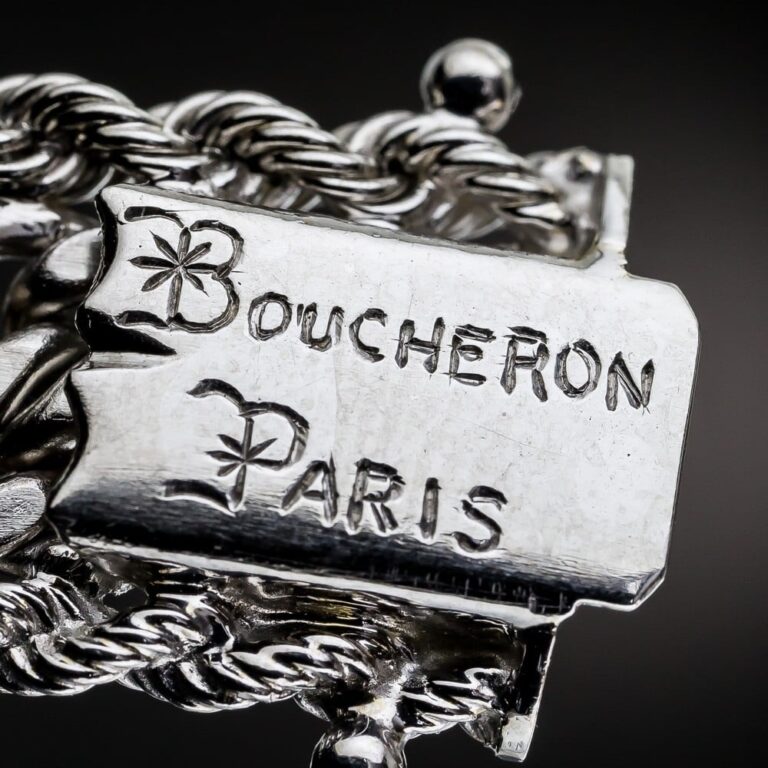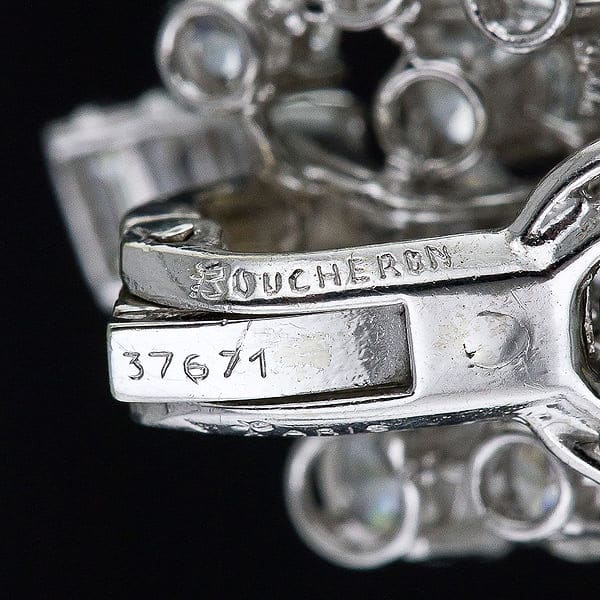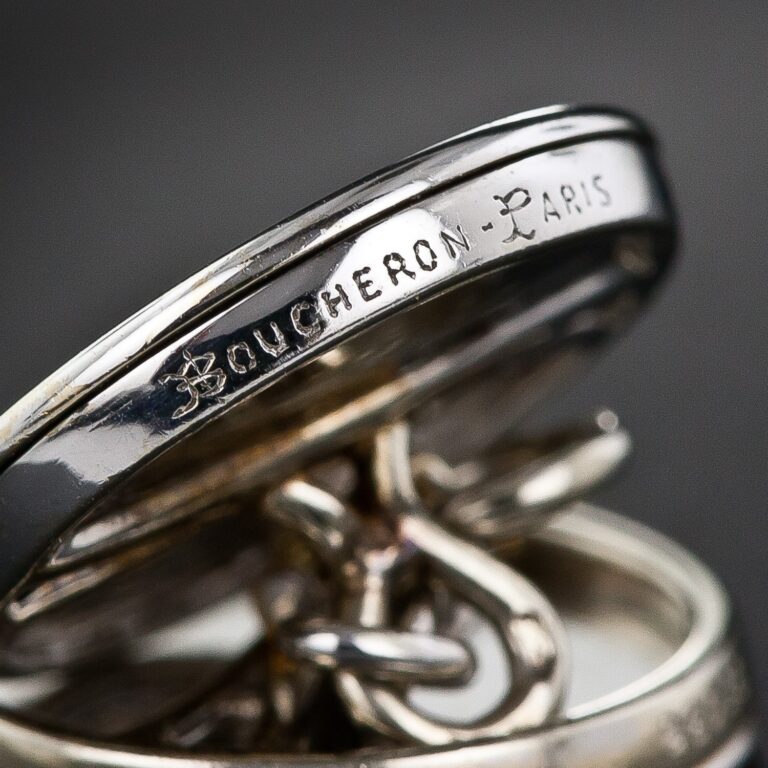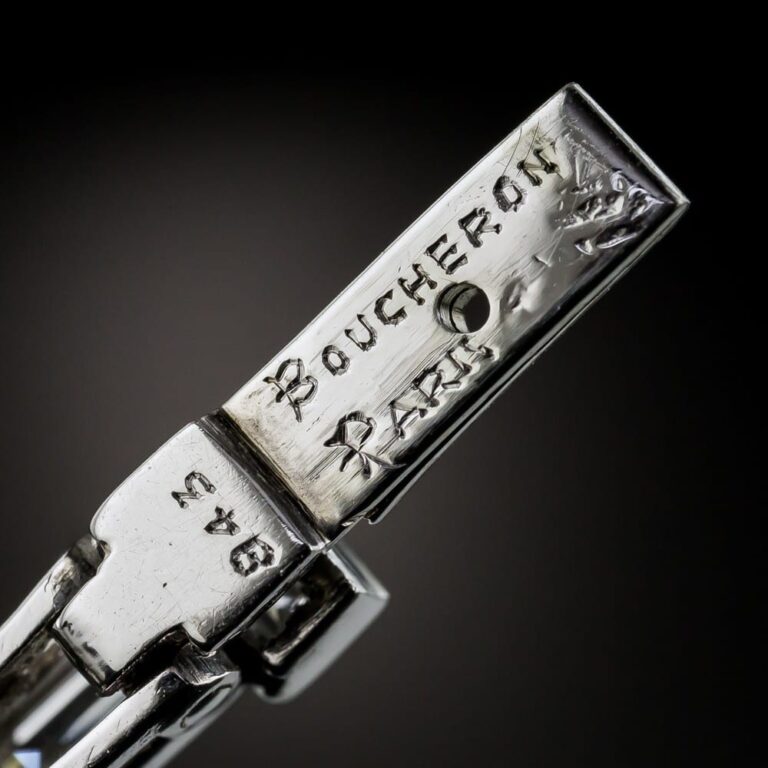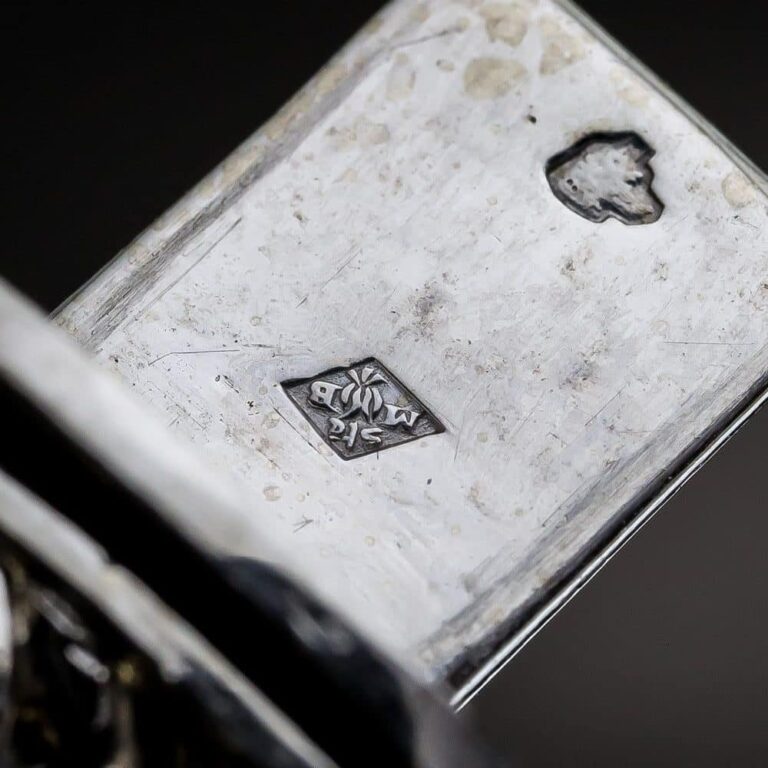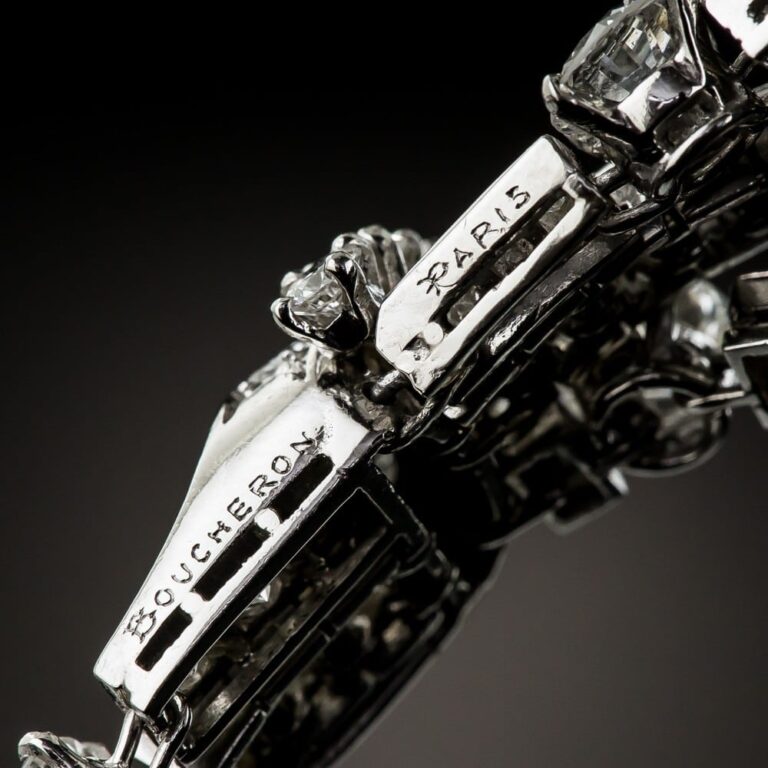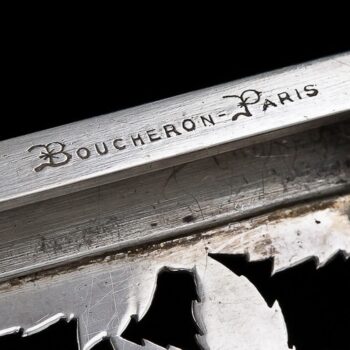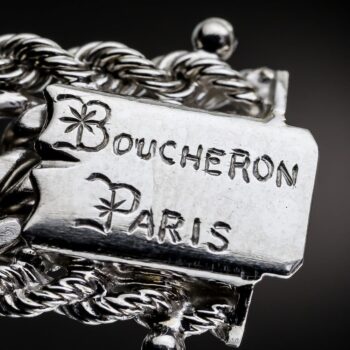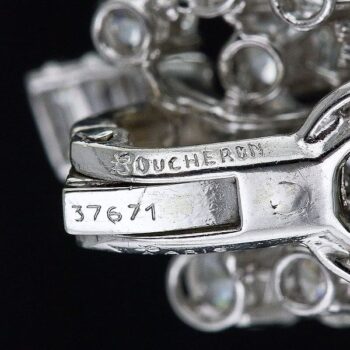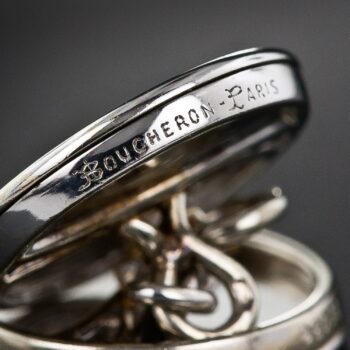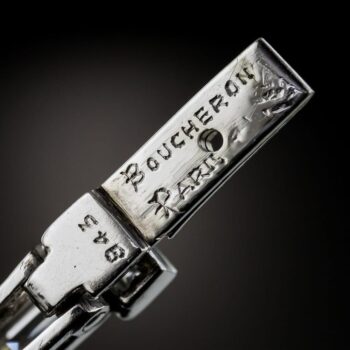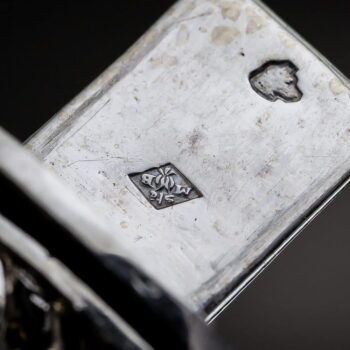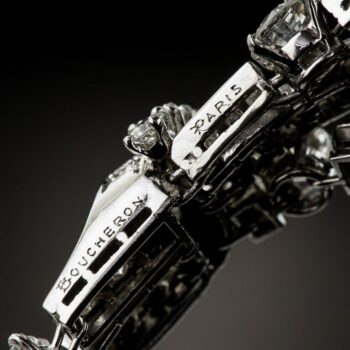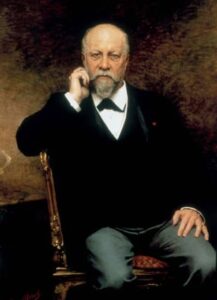
Before opening his own jewellery store in 1858, Frédéric Boucheron apprenticed at the fashionable Parisian jewellery house Deschamps. When Deschamps retired, he discouraged Frédéric from entering the jewellery trade, calling him “not cut out to be the proprietor of a business.”1 Nonetheless, Boucheron persevered and his eponymous firm has become one of the most well-regarded and preeminent of jewellery houses.
The gemstones he used were carefully selected for color and quality. Even Boucheron’s most accomplished competitors, like André Massin, praised the firm’s pieces for their “faultless craftsmanship.”2 The jewels were also unusual. As fellow jeweller and historian Henri Vever said, Boucheron made pieces that “very few of his colleagues would have dared to make at the time.”3 The firm thus developed a faithful and growing clientele including the firm Tiffany & Co. In 1867, Boucheron won a grand prize for jewellery at Paris’s International Exposition for pieces in the archaeological revival and Louis XVI styles. In 1876, the French government presented Frédéric Boucheron with a Legion of Honor award for his jewellery. Awards from international expositions would continue for the next fifty years.
Though he started with little capital and a small stock of jewellery, Boucheron quickly attracted Parisian trendsetters’ attention. Among his specialties were lacy gold metalwork embellished with diamonds, engraved diamonds (uncommon still today), and delicate plique-à-jour enameling.
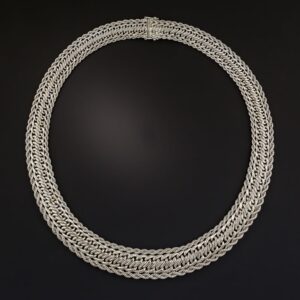
Frédéric would not see all of them. He died in 1902, leaving the firm to his son Louis. The business was in good shape. Nine years earlier, in 1893, Boucheron had taken up residence at 26 Place Vendôme, Paris. By the turn of the century, the firm had enough name recognition, and capital, to open branch stores in London and New York. In the early 1930s, the firm expanded its presence to the Middle East and South America. Fred and Gérard Boucheron, Louis’s sons, literally carried Boucheron’s jewellery all over the globe, offering private showings to important clients. As the twentieth century dawned, the firm stayed at the cutting edge of fashion. It produced exquisite Art Nouveau, Edwardian, and Art Deco pieces. During the 1930s and ’40s, Boucheron popularized detachable dress clips and like other firms during the Retro period, its designers made ample use of three-dimensional motifs, flexible chains, and tassels.
In 1962, control of the firm passed to Gérard’s son, Alain. Under his direction, the firm returned to materials it had used at the beginning of the century including rock crystal quartz, coral, wood, and turquoise. In the 1970s and ’80s, Boucheron designers mixed such materials with diamonds and other precious stones to create large, impressive pieces. To this day, the firm’s designs often feature design motifs from their past including carved multicolour gemstones, geometric lines, tassels, and mesh elements mesh in combination with more modern design components continuing their reputation for impeccable quality and design.
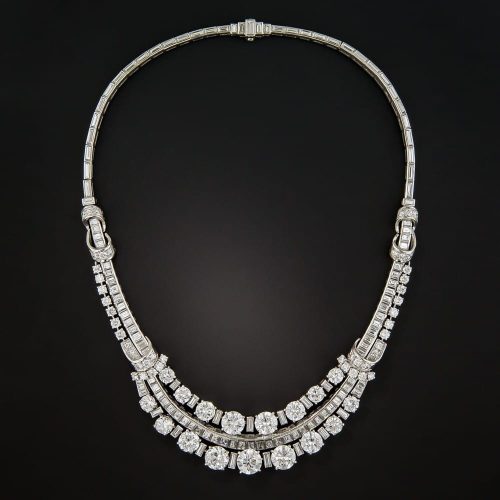
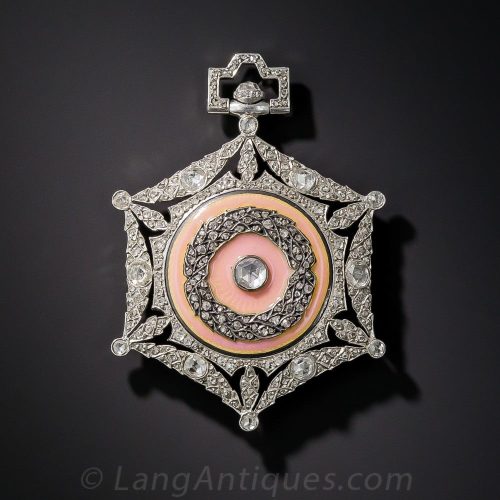
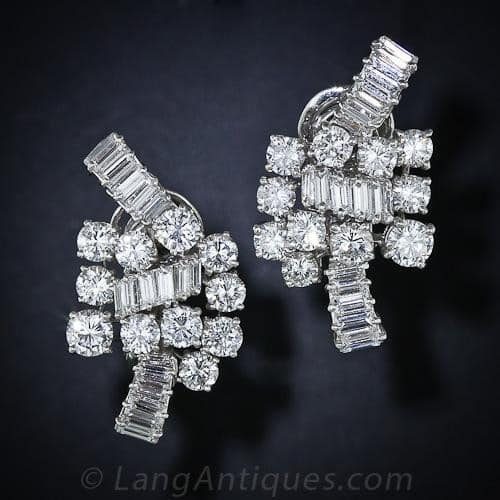
Boucheron
| Country | |
|---|---|
| City | Paris |
| Symbol | cartouche, frame, lozenge, rhombus |
| Shape | cartouche, frame, lozenge, rhombus |
| Era | e.1858 – current |
Boucheron
Specialties
- Worked in both joaillerie and bijouterie.
- Hired local artists to render designs.
- Art Nouveau Designs
- Dress Clips
1830
- Frédéric Boucheron (1830-1902) born in Paris.
1844
- Apprentice to Jules Chaise
1853
- Assistant, Tixier-Deschamps, Palais Royal
1858
- Established his first boutique in the Galerie de Valois
1866
- Workshop established.
- Lacy gold metalwork.
- Faultless Craftsmanship.
Innovative use of unusual materials
- First to do openwork cloisonné (Plique-à -Jour) enamel.
- Carved diamonds into insect wings and sometimes engraved them.
- Steel encrusted with gold.
1866-1928
- FB Maker’s Mark in Lozenge depicted below.
1867
- Exhibited at the World Exhibitions. Awarded a gold medal for jewelry in 1867 at the Universal Exhibition, Paris.
1875
- Participated in the World Exhibition in Philadelphia
1878
- First Prize at the Universal Exhibition, Paris.
1887
- Boucheron is the only French jeweler to participate in the auction of the French Crown diamonds.
1889
- Universal Exhibition, Paris marked the introduction of the point d’interrogation necklace.
1893
- First jeweler to move to Place Vendôme.
1900
- Gold medal at the Universal Exhibition, Paris.
- Noted as one of the forerunners of Art Nouveau.
1902
- Death of Frédéric Boucheron.
- Succeeded by Louis, his son.
1909
- Louis goes to India for the first of many influential trips.
1921
- Creates Queen Mother Elizabeth’s favorite diadem.
1930
- Boucheron is named Curator and Guardian of the Imperial Treasure of Persia.
c.1930s-40s
- Popularized detachable dress clips.
Designers
- Jules Debut – 1858 to 1879
- Octave Loeuillard – 1865 to 1875
- Louis Rault – 1868 to 1875
- Paul Legrand – 1863 to 1892
- Auguste Bugniot – 1890 to ?
- Lucien Hirtz – 1893 to 1925
- Edmond-Henri Becker, sculptor & woodcarver.
Sources
- Neret, Gilles. Boucheron: Four Generations of a World-Renowned Jeweler. New York: Rizzoli, 1984.
- Vever, Henri. French Jewelry of the Nineteenth Century. Translated by Katherine Purcell. London: Thames & Hudson, 2001 [1906-8], 1091.

